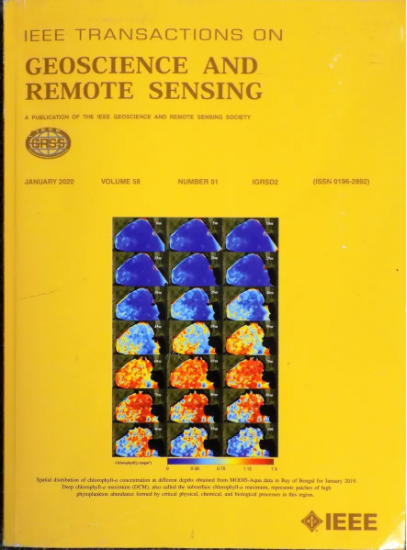Third-Order Cumulants Based on Quadratic Frequency Coupling Constraints for Parameter Extraction of Magnetic Resonance Sounding Signals
IF 7.5
1区 地球科学
Q1 ENGINEERING, ELECTRICAL & ELECTRONIC
IEEE Transactions on Geoscience and Remote Sensing
Pub Date : 2024-11-26
DOI:10.1109/TGRS.2024.3506755
引用次数: 0
Abstract
In this article, a novel third-order cumulant (TOC) method based on quadratic frequency coupling (QFC) constraints is proposed to enhance the accuracy of parameter extraction for magnetic resonance sounding (MRS) signals. As a geophysical exploration technology, MRS signals are often affected by environmental noise and human interference, leading to reduced signal-to-noise ratio (SNR) and increased difficulty in parameter extraction. To address this issue, a new signal processing technique is introduced in this study. By combining the third-order accumulated main diagonal slices with the QFC, it is possible to identify and suppress random and harmonic noise in an effective manner. This method is not only suitable for traditional harmonic noise processing but also capable of handling complex noise environments with multiple fundamental frequencies and time-varying fundamental frequencies. The simulation results show that for the noisy signal with an initial SNR of about −20 dB, the SNR can be increased to more than 20 dB after processing by the QFC, with an increase of at least 40–50 dB, and the fitting error of the characteristic parameter extraction is less than ±5%. Compared with the traditional HMC and SSA algorithms, the QFC algorithm obtains the minimum root mean square error of 0.72 nV; besides, the computational efficiency of the QFC has obvious advantages, which is 3.3 times that of the HMC and 9.4 times that of the SSA. Therefore, the QFC has higher accuracy in parameter extraction and computational efficiency. The successful application of this method will provide strong technical support for hydrogeological exploration, environmental monitoring, and underground engineering detection.基于二次频率耦合约束的三阶累积量用于磁共振探测信号的参数提取
为了提高磁共振探测信号参数提取的精度,提出了一种基于二次频率耦合(QFC)约束的三阶累积量方法。作为一种物探技术,MRS信号经常受到环境噪声和人为干扰的影响,导致信噪比降低,参数提取难度加大。为了解决这一问题,本研究引入了一种新的信号处理技术。将三阶累积主对角切片与QFC相结合,可以有效地识别和抑制随机噪声和谐波噪声。该方法不仅适用于传统的谐波噪声处理,而且能够处理多基频和时变基频的复杂噪声环境。仿真结果表明,对于初始信噪比约为−20 dB的噪声信号,经过QFC处理后,信噪比可提高到20 dB以上,提高幅度至少为40 ~ 50 dB,特征参数提取的拟合误差小于±5%。与传统的HMC和SSA算法相比,QFC算法的均方根误差最小为0.72 nV;QFC的计算效率是HMC的3.3倍,SSA的9.4倍,具有明显的优势。因此,QFC在参数提取上具有更高的精度和计算效率。该方法的成功应用将为水文地质勘查、环境监测、地下工程探测等提供有力的技术支撑。
本文章由计算机程序翻译,如有差异,请以英文原文为准。
求助全文
约1分钟内获得全文
求助全文
来源期刊

IEEE Transactions on Geoscience and Remote Sensing
工程技术-地球化学与地球物理
CiteScore
11.50
自引率
28.00%
发文量
1912
审稿时长
4.0 months
期刊介绍:
IEEE Transactions on Geoscience and Remote Sensing (TGRS) is a monthly publication that focuses on the theory, concepts, and techniques of science and engineering as applied to sensing the land, oceans, atmosphere, and space; and the processing, interpretation, and dissemination of this information.
 求助内容:
求助内容: 应助结果提醒方式:
应助结果提醒方式:


